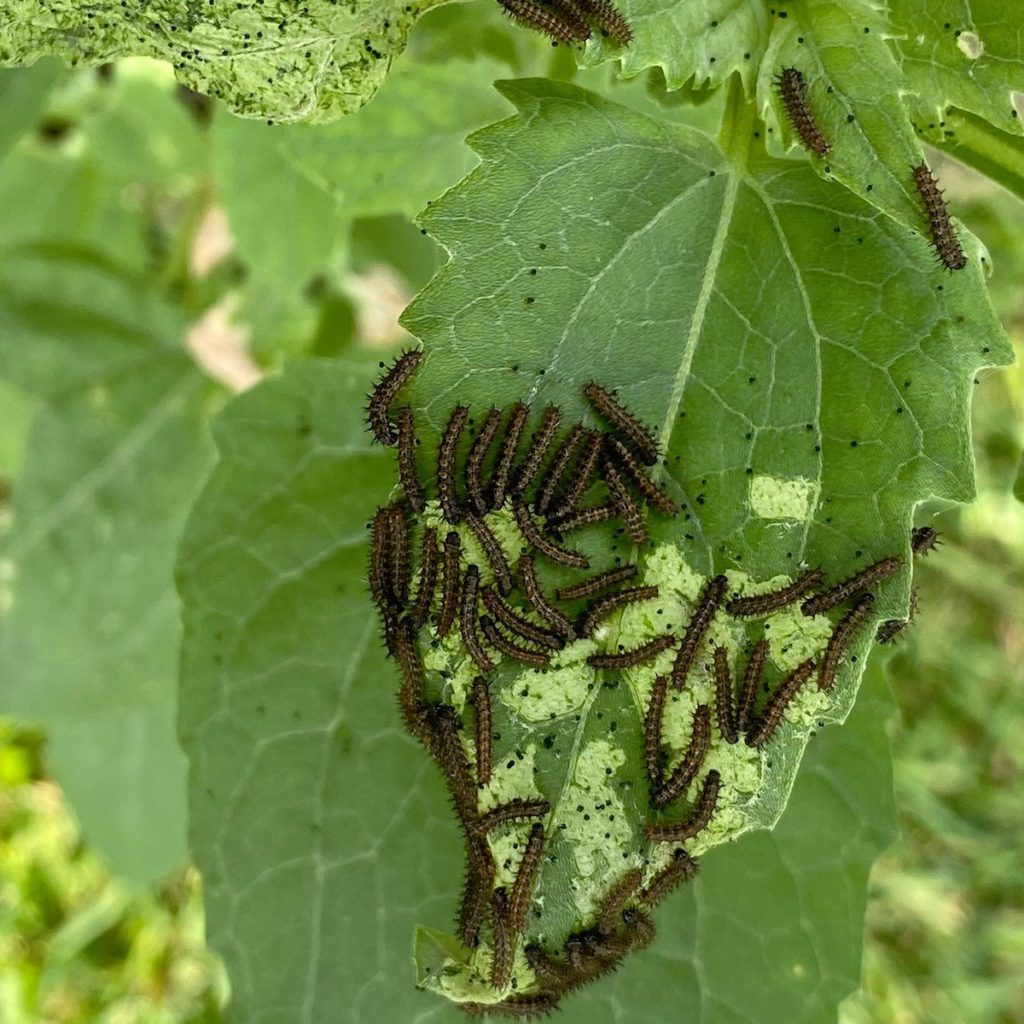A stop in to one of my favorite Facebook pages, The Butterfly Landing, inspired this week’s blog on Maximilian sunflowers. Laura Jarvis, owner and operator of The Butterfly Landing, often highlights amazing pollinator plants, many of them native, on her Butterfly Landing Facebook page. The post about Maximilian sunflowers (Helianthus maiximiliani) caught my eye for multiple reasons. First of all, I love me some sunflowers! Secondly, she had me at butterflies, and bees, and pollinators, oh my! Lastly, but not leastly, when I saw that this variety of sunflower is a perennial, it was game on! Those are more than enough reasons for me to take a deeper dive into the Maximilian sunflower.
If you haven’t followed The Butterfly Landing yet, I highly recommend that you do. Laura offers up some great plant options and gardening tips for pollinator gardening and also gives you updates when she’ll be bringing some of her plants to Rainbow Gardens for purchase.


3 Reasons to Love the Maximilian Sunflower
1. Maximilian Sunflowers are Beautiful: Let’s first address the sheer gorgeousness of the Maximilian sunflower. Because, c’mon, we all like pretty things! This sunflower boasts anywhere from 20-40 sunshine-yellow rays (petals) on flower heads that are 5 inches wide. The center is about 1 inch across and ranges in color from green to dark brown as the seeds mature. Each plant has a main stem, and towards the top half of that stem, shorter flowering stalks are produced. Each of these stalks on the Maximillian sunflower produces a single flower, but there are many stalks. In other words, you get a ton of flowers! You can usually expect to see these flowers from August through November. What a great time for blooms as it coincides with the influx of pollinators during that time in San Antonio.
Don’t forget that one of the coolest things about sunflowers is that they are heliotropes (sun lovers). They take on an adorable personality as they turn their heads towards the sun and follow it as it moves across the sky. Next time you see a field of sunflowers, take note of where they are looking!
2. Maximilian Sunflowers are Pollinator Attractors: Speaking of pollinators, what a treat the Maximilian sunflower is for our native wildlife! Butterflies, long-tongued bees, short-tongued bees, skippers, and more are extremely attracted to these flowers. Checkerspot, Painted Lady, and Bordered Patch butterflies zoom in on this host plant to lay their eggs. The caterpillars happily munch their way to adulthood. Gamebirds and songbirds devour the seeds. Even non-native wildlife gets in on the action as tall plants in prairie settings are a treat for livestock. Shelter for wildlife is also provided by Maximilian sunflowers.


3. Maximilian Sunflowers are Perennials: Now here is one of the coolest things about the Maximilian sunflower. While most sunflowers are annuals, Maximilian sunflowers are perennials and come back by their roots for several years. These sunflowers grow to average heights of about 5’-8’ and an average of 2’-4’ wide. They may self-seed and form a large colony, so give them room to spread. Sunflowers generally grow well in most soil types as long as they drain well; once they are rooted, they tend to be pretty drought tolerant (though an extra drink of water in extended periods of drought is welcome). Just like their name implies, Maximilian sunflowers need to be planted in full sun.
I hope this blog piques your interest enough to look into possibly including the pollinator-attracting, native, perennial Maximilian sunflower into your larger perennial gardens. I know I am introducing it to mine! Look for the seed or the plants at Rainbow Gardens and don’t forget to like, follow and share The Butterfly Landing!
~The Happy Gardener, Lisa Mulroy


What wonderful information! Thanks so much for posting this, and the photos are great.
Gotta get me some for sure!
Thank you Carol! I bought a gallon size myself just the other day. I can’t wait to see them this summer and fall!